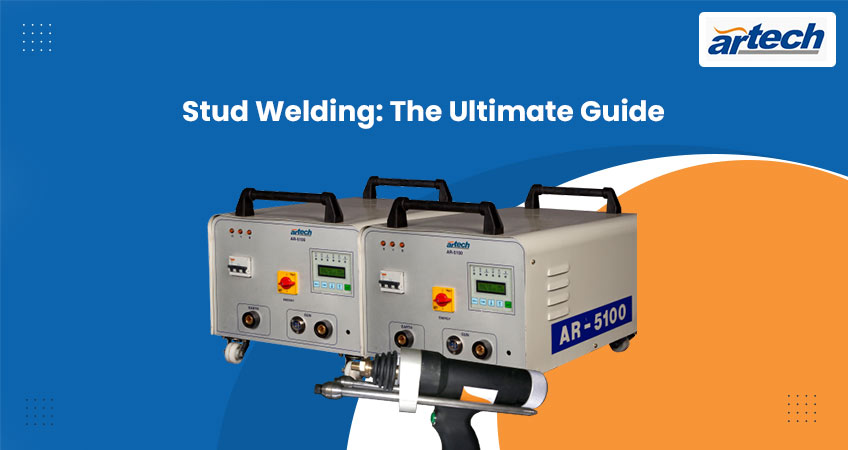Whether you are a manufacturer, an engineer, or a professional who use welding in daily processes, you most likely would have come across the Stud Welding Process. It is one of the most popular welding methods known for its accuracy, visually appealing aesthetics, speed, reliability and cost-efficiency.
Stud Welding is used to joining metal studs to a parent metal workpiece by heating both parts of metal with an electric arc. The arc generates enough heat to bring both metals to the melting point, and then pressure is applied to make strong weld bonds. When compared with other fastening and welding processes, stud welding is more preferred for faster assembly in minimum steps.
Types of Stud Welding
There are two major types of stud welding- Capacitor Discharge (CD) Welding and Drawn Arc Welding. What’s the biggest difference between both types? CD welding is commonly used for thin parent metals, whereas Drawn Arc Welding can weld heavy parent materials and high diameter studs.
Capacitor Discharge (CD) Stud Welding
This Stud welding type is commonly used when welding aesthetics are of utmost importance. It is known for its flawless, and minimal or no back marking is desirable. The weld cycles in CD welding are short. It is less than 10 milliseconds and works under low temperature. This process is known to minimize the penetration depth into the parent material surface. It can be used for welding ferrous and non-ferrous studs of smaller diameter on light gauge material.
Applications of CD Stud Welding
CD Stud Welding is used in the following products.
- Elevator Control Panels
- Control Panels
- Electrical Control Panels
- Stainless Steel Cookware
- Stainless Steel Kitchenware
- Insulation Fixing
- Electrostatic Precipitators
Drawn Arc Stud Welding is used for uniform high weld quality. This method of welding is used for higher diameter studs and where higher weld strength is needed. Ceramic ferrule or shielding gas is used for welding studs. It does not require additional materials such as inert gas, flux, etc. DA Stud Welding can weld studs from diameter 3mm to 25mm. It also eliminates different operations such as drilling, riveting, etc. The welds produced by DA Stud Welding are often leak-resistant, have high structural integrity, corrosion-resistant, less affected by vibrations and more.
Applications of DA Stud Welding
- Transformer Tanks
- Boiler bed coils
- Shipbuilding
- Metal Structures
- Heat exchangers
- Automobile
- Heavy fabrication
- Shear connector welding
- PEB – Pre-engineered buildings
- Rail overbridge (ROB)
Shear Connectors
Shear Connectors are the fasteners used to attach an object or structure to concrete. Drawn Arc Stud Welding is used in Shear Connectors. Connectors are welded to the surface to transfer the shear load between composite beam elements. At Artech Welders, we manufacture a durable range of Shear Connectors as per BS13918.
Advantages of Shear Connectors
- It is easy to use
- The installation process is fast as compared to conventional processes.
- Requires minimum human intervention
- It is considered more consistent. The weld parameters are predetermined and programmed in the machine.
- It is very economical.
We hope this blog has given you insights into Stud Welding and its different types. At Artech Welders, we are engaged in the manufacturing and supplying of industrial welding machines. We provide a range of stud welding machines, capacitor discharge projection welding machines, shear connectors, and lots more. Being in the market for years, we have established our brand name synonymous with the latest technology, timely deliveries, premium quality, all this under competitive prices. So, if you are looking to place a single welding machine order or the requirement is in bulk, Artech Welders is the one to reach out to!
Shift to better welding with Artech!

